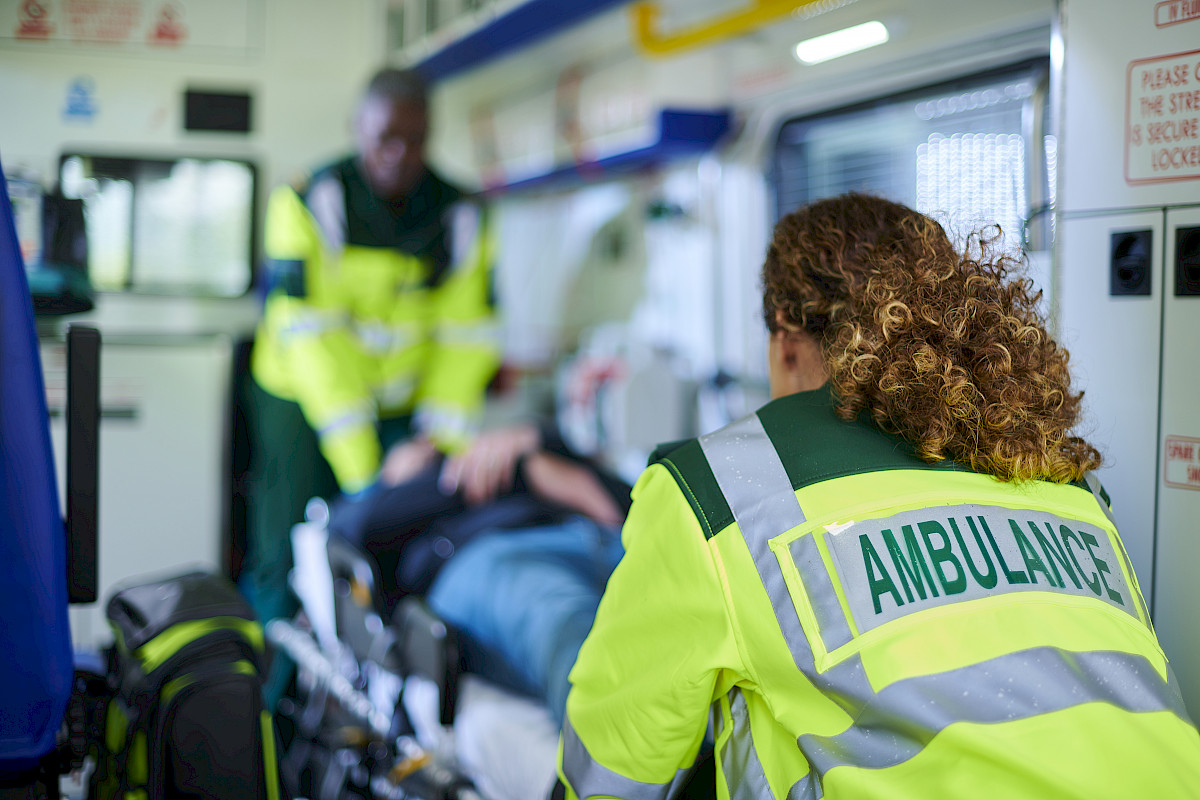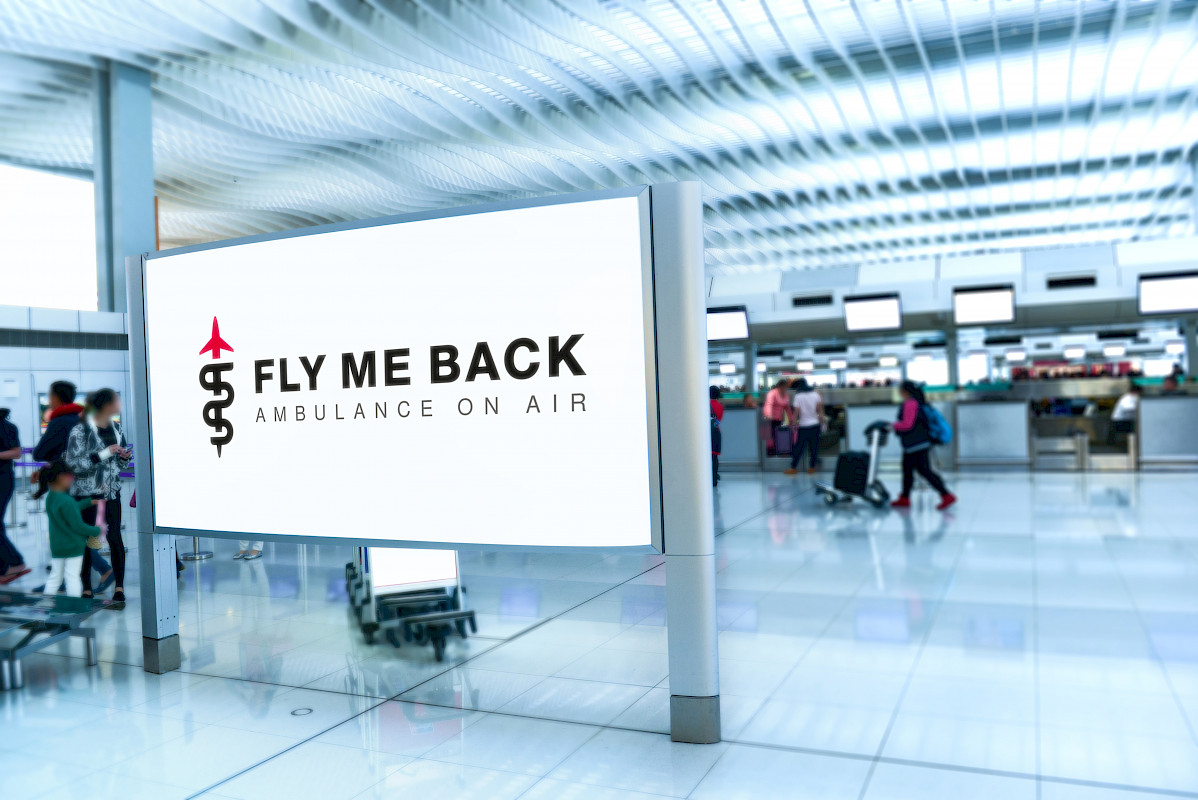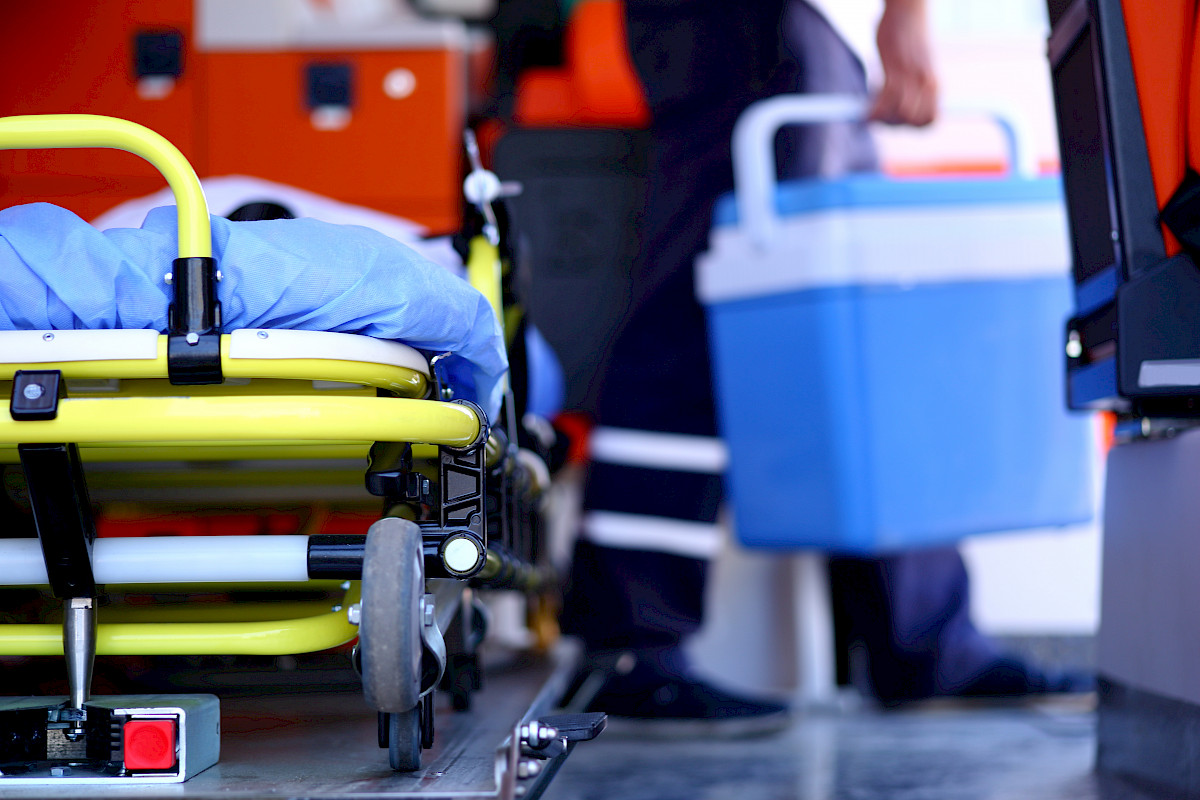What is an air ambulance flight?
Everything you need to know about medical air transport
The ambulance flights that we carry out every day at Fly me back are a specialised form of air transport for patients who require urgent medical care. They are also known as air ambulance or medical flights and enable injured or sick people to be transported quickly and safely over medium and long distances, often even across national borders.
Areas of application for ambulance flights
Air ambulance flights fulfil various medical needs:
- Medical repatriation: patient repatriation from abroad after accidents or serious illnesses by specialised air ambulance services.
- Medical evacuation: Emergency air transport of injured or sick people from crisis regions and remote areas by means of rescue aircraft.
- Medical transport: Interclinical transfer flights to transfer intensive care patients to specialised clinics or better-equipped hospitals.
- Medical tourism: International patient transport to foreign specialised clinics for advanced or more cost-effective treatment.
- Transport of children or incubators: Highly specialised air rescue for infants and young children with flying intensive care units and transport incubators.
- Repatriation of corpses: Time-critical air freight of donor organs to quickly bridge large distances for life-saving transplants.
Advantages of ambulance flights compared to
conventional transport methods
Medical precision meets flexibility
In emergency situations or complex medical cases, air ambulance flights prove to be the optimal transport solution. Here are the top five reasons why it is often the best choice for critical medical transport:
An ambulance jet acts as a flying intensive care unit and guarantees uninterrupted, high-quality treatment. Highly qualified flight physicians and specially trained paramedics monitor the patient's state of health throughout the flight and are able to carry out life-saving and stabilising measures in emergencies.
From ventilators and defibrillators to syringe pumps - the modular equipment for ambulance flights is customised to the needs of the patient. Even special equipment such as transport incubators for premature babies or isolation units for highly infectious patients can be integrated if required.
In medical emergencies, every minute counts. Ambulance flights are characterised by their speed and flexibility. Unlike scheduled flights, there are no fixed flight schedules or long waiting times. An ambulance jet can be ready for action in the shortest possible time - often within two hours - and take the patient directly to their destination without any stopovers.
The compact size of ambulance jets also allows them to fly to regional airports and airfields. This reduces the transport time to the nearest hospital and minimises the burden on the patient due to shorter ground transport routes. In combination with rescue helicopters as feeder aircraft, patients can be picked up from practically anywhere and taken to their destination.
Many modern ambulance aircraft are equipped with advanced pressurised cabin systems that minimise the pressure difference and maintain the cabin pressure at ground level if necessary. This makes medical air transport much more comfortable and safer, especially for patients with pressure-sensitive conditions, such as after operations or lung diseases.
Equipment and characteristics
of air ambulances
Air ambulances are specially converted and equipped aircraft with a wide range of medical equipment on board:
- Complete ambulance equipment
- Intensive care components
- Oxygen cylinders and air compressors
- Ventilators
- Defibrillator and electrocardiograph
Depending on the size of the aircraft, up to six patients can be transported lying down. The stretchers used for this purpose are known in aviation as ‘stretchers’.
Costs of an ambulance flight
Medical transport on a scheduled flight is uncomfortable and often unpleasant if you are already unwell. The flight crew are also not the right people to deal with your medical concerns. In comparison, an ambulance flight by private jet is often more cost-effective and flexible. The costs depend on the following factors:
The distance between the starting point and destination influences the costs.
The medical condition of the patient determines the necessary equipment and personnel.
Spontaneous bookings can be more expensive than long-term planned flights.
The number of accompanying persons may increase the costs.
Fly me back is your reliable
partner for safe air ambulance flights
Air ambulance flights play a crucial role in modern medical care. They enable the fast, safe and comfortable transport of patients in urgent need of medical assistance. Whether for repatriations, evacuations or other medical emergencies, air ambulance flights are an indispensable tool in the global healthcare system.
If you or one of your family members should ever need an air ambulance flight, Fly me back's staff are available around the clock to provide fast and professional assistance. Would you like to find out more about our air ambulance flights and our other services?




